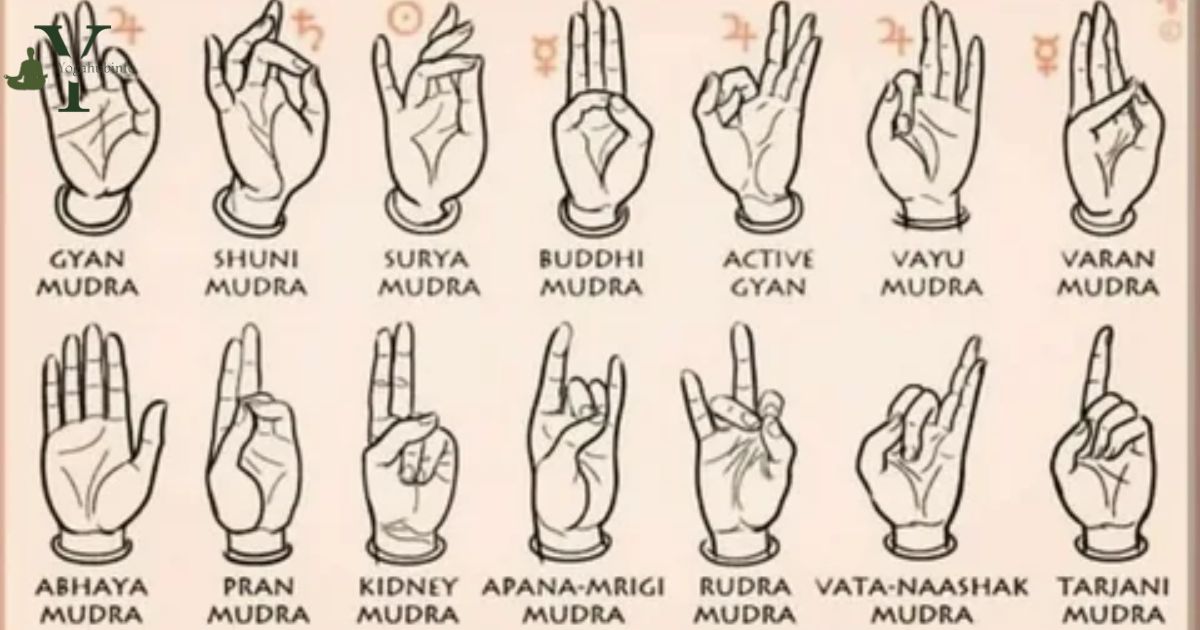Answer .Yoga hand symbols, or mudras, are gestures that enhance energy flow and spiritual focus in yoga. These symbolic hand positions hold specific meanings, influencing mental and physical aspects of well being.
Yoga Hand Symbols are gestures, known as mudras, used in yoga practice to channel energy and promote well-being. These hand positions have deep spiritual and cultural significance. Each symbol carries a specific meaning, aligning with various aspects of the body, mind, and spirit. Practicing these mudras enhances concentration, relaxation, and the overall benefits of yoga.
Embark on a journey of tranquility with Yoga Hand Symbols. Explore the profound language of serenity through elegant gestures. Decode the secrets of inner peace, intricately woven into each symbol. Join us as we unravel stories of balance and well-being, inviting you to harmonize your mind, body, and spirit.
Yoga hand symbols, known as mudras, are powerful gestures used in yoga and meditation. These hand positions have specific meanings and are believed to channel energy within the body. Practicing mudras can enhance concentration, relaxation, and spiritual connection. Each unique hand gesture corresponds to different aspects of well-being and inner balance.
Mudra: What is it?
Mudra is a traditional Indian practice that involves hand gestures and positions during meditation and yoga. These symbolic movements are believed to channel energy and create a connection between the body and the mind. Mudras have been an integral part of Indian culture for centuries, with each gesture holding specific meanings and benefits.
Types of Mudras
There are various types of mudras, each serving a unique purpose. Hasta Mudras involve hand gestures, while Adhara Mudras focus on different parts of the body. Popular mudras include the Gyan Mudra, where the thumb and index finger touch, symbolizing knowledge and wisdom. Practicing mudras is thought to enhance concentration, promote healing, and balance the flow of energy in the body.
Incorporating Mudras into Daily Life
Mudras can be easily incorporated into daily life, whether during meditation, yoga, or routine activities. They offer a simple yet powerful way to align the body and mind, promoting overall well-being. As individuals explore the world of mudras, they may discover the profound impact these hand gestures can have on their physical, mental, and spiritual health.
Mudras Meaning
Mudras, derived from the ancient Sanskrit word for seal or “gesture,” are symbolic hand or body positions commonly used in meditation and yoga practices. These intricate gestures hold profound significance in various spiritual and cultural traditions, influencing the flow of energy within the body and mind.
Each mudra is thought to channel specific energies and emotions, fostering a connection between the individual and the cosmic forces. As a form of non-verbal communication, mudras contribute to the holistic well-being of practitioners, promoting mental clarity, spiritual awareness, and balance in one’s life.
Classic Yoga Mudras
| Mudra Name | Meaning | Technique |
| Anjali Mudra | Salutation or prayer gesture | Press the palms together in front of the chest, fingers pointing up. |
| Gyan Mudra | Gesture of knowledge | Touch the tip of the thumb and index finger, forming a circle. |
| Chin Mudra | Consciousness gesture | Touch the tip of the thumb and the index finger, other fingers extended. |
| Prithvi Mudra | Earth element gesture | Touch the tip of the ring finger to the tip of the thumb. |
| Varuna Mudra | Water element gesture | Touch the tip of the little finger to the tip of the thumb. |
| Vayu Mudra | Air element gesture | Fold the index finger, press the base with the thumb, other fingers extended. |
| Akash Mudra | Space element gesture | Touch the tip of the middle finger to the tip of the thumb. |
| Shuni Mudra | Discipline or patience gesture | Press the tip of the middle finger to the base of the thumb. |
Classic Yoga Mudras are hand gestures that enhance concentration and spiritual connection. These ancient practices originated in India and have been integral to traditional yoga and meditation. Mudras are believed to channel energy flow, promoting overall well-being.
These hand gestures are simple yet powerful, involving various combinations of finger positioning. Each mudra carries unique significance and benefits, such as stress reduction, improved focus, and heightened awareness. Practicing classic yoga mudras regularly can contribute to a more balanced and harmonious lifestyle.
Used during meditation, breathing exercises, or as part of a yoga routine, classic yoga mudras offer a holistic approach to mental and physical health. Incorporating these gestures into your practice can deepen your connection with the spiritual aspects of yoga, fostering a sense of inner peace and tranquility.
SARASVATI BIJASANA (STANDING) WITH KAPITTHA AND SUCHI MUDRAS
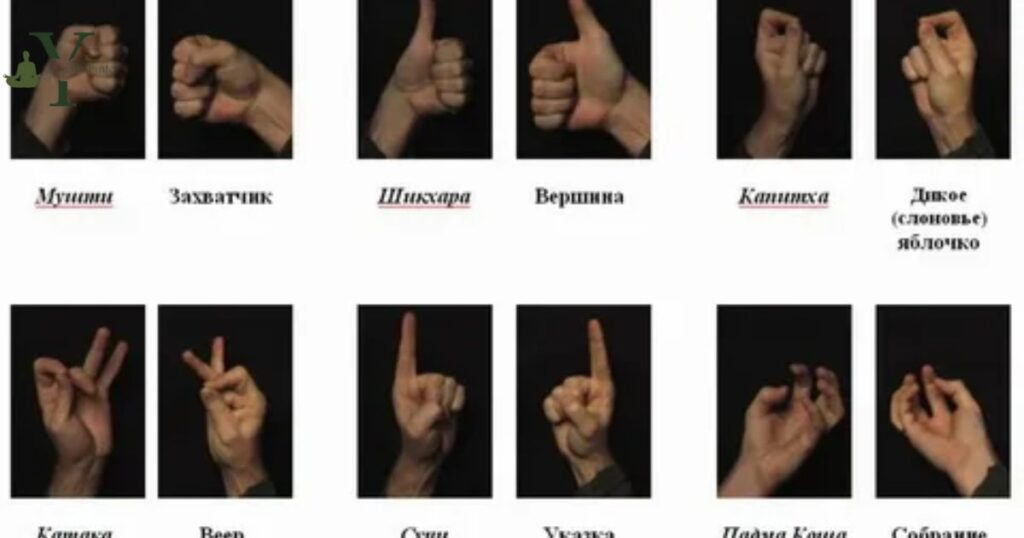
Sarasvati Bījāsana is a standing yoga pose that promotes balance and focus. In this pose, you stand tall with your feet firmly grounded, arms relaxed by your sides, and your gaze forward. It helps in improving posture and strengthening leg muscles.
Kapittha Mudra, when practiced with Sarasvati Bījāsana, involves joining the fingertips of both hands while keeping the thumbs extended. This mudra enhances concentration and channels energy throughout the body. It is known to stimulate mental clarity and bring a sense of calmness to the mind.
Adding Suchi Mudra to Sarasvati Bījāsana involves interlocking the fingers and pointing the index fingers upward. This mudra is believed to balance the flow of energy in the body and improve digestion. Together, these mudras complement the standing pose, creating a harmonious practice that benefits both physical and mental well-being.
UTTHITA HASTA PADASANA WITH BHRAMARA MUDRA
Utthita Hasta Padasana with Bhramara Mudra is a yoga pose that combines balance and hand gestures. In this posture, one stands on one leg while the other leg is lifted, creating a sense of stability and focus. The addition of Bhramara Mudra, a hand gesture resembling a bee, enhances the meditative and calming aspects of the pose.
Pose Description
To practice Utthita Hasta Padasana with Bhramara Mudra, start by standing tall with feet together. Lift one leg forward while extending the opposite arm, creating a straight line. The lifted leg and extended arm should be parallel to the ground. Simultaneously, form Bhramara Mudra with the free hand, bringing the fingertips to touch at the center of the chest. This pose not only challenges physical balance but also encourages mental concentration.
Benefits
This yoga pose offers numerous benefits, such as improved balance, strengthened leg muscles, and enhanced focus. Bhramara Mudra adds a therapeutic element by promoting a sense of calmness and mindfulness. Incorporating Utthita Hasta Padasana with Bhramara Mudra into a regular yoga practice can contribute to both physical and mental well-being, making it a valuable addition to holistic health routines.
ANJANEYASANA WITH PUSHPAPUTA MUDRA
Anjaneyasana with Pushpaputa Mudra is a yoga pose that combines the benefits of a deep lunge with a specific hand gesture. This pose is also known as the Monkey Pose or Crescent Moon Pose. It involves stretching one leg behind, forming a lunge, while incorporating Pushpaputa Mudra to enhance the practice.
To practice Anjaneyasana with Pushpaputa Mudra, begin in a lunge position with one foot forward and the other extended back. As you sink into the lunge, bring your hands into Pushpaputa Mudra, where the fingers form a flower-like shape. This mudra is believed to channel energy and enhance concentration, complementing the physical benefits of the pose.
Anjaneyasana with Pushpaputa Mudra offers a variety of benefits, including improved flexibility in the hip flexors and thighs. The combination of the pose and mudra also helps in balancing energy flow throughout the body. Regular practice can enhance mental focus and promote a sense of calm. Including this pose in your yoga routine can contribute to both physical and mental well-being.
Ten yoga mudras and Their benefits
Ten Yoga Mudras and Their Benefits
Yoga mudras are symbolic hand gestures that have been used for centuries in the practice of yoga and meditation. These gestures are believed to influence the flow of energy in the body and promote physical, mental, and spiritual well-being. Here are ten yoga mudras along with their benefits:
- Anjali Mudra (Prayer Gesture)
- Benefits: Anjali Mudra is a common gesture used to start and end a yoga session. It symbolizes gratitude, unity, and balance. Practicing this mudra helps in calming the mind and opening the heart.
- Gyan Mudra (Knowledge Gesture)
- Benefits: Formed by joining the thumb and index finger, Gyan Mudra is believed to enhance concentration, memory, and creativity. It is associated with the flow of knowledge and wisdom.
- Prithvi Mudra (Earth Gesture)
- Benefits: Prithvi Mudra is thought to increase the earth element in the body. This mudra is believed to boost vitality, improve digestion, and strengthen the immune system.
- Vayu Mudra (Air Gesture)
- Benefits: Vayu Mudra is said to balance the air element in the body, relieving conditions like excessive gas and joint pain. It is believed to promote a sense of lightness and ease.
- Apana Mudra (Energy Gesture)
- Benefits: Apana Mudra is associated with the downward flow of energy. Practicing this mudra is believed to aid in detoxification, improve digestion, and balance the body’s energy.
- Shuni Mudra (Seal of Patience)
- Benefits: Shuni Mudra is thought to enhance patience and discipline. It is associated with the planet Saturn and is believed to bring about a sense of stability and focus.
- Surya Mudra (Sun Gesture)
- Benefits: Surya Mudra is believed to increase the fire element in the body, promoting metabolism and digestion. It is associated with energy, vitality, and warmth.
- Varun Mudra (Water Gesture)
- Benefits: Varun Mudra is associated with the water element and is believed to balance bodily fluids. It is thought to relieve dehydration, dryness, and improve skin health.
- Apana Vayu Mudra (Energy of Elimination Gesture)
- Benefits: This mudra combines the elements of Apana and Vayu mudras, aiming to balance the elimination of waste from the body and regulate energy flow.
- Maha Sacral Mudra (Great Sacral Gesture)
- Benefits: Maha Sacral Mudra is believed to activate the sacral chakra, fostering creativity, sensuality, and emotional balance. It is associated with the water element.
While practicing these mudras, it’s important to maintain a calm and focused mind. Incorporating them into your yoga and meditation routine may contribute to a holistic approach to health and well-being. However, it’s advisable to learn and practice these mudras under the guidance of a qualified yoga instructor for maximum benefits.
Dragonfly Yoga Studio
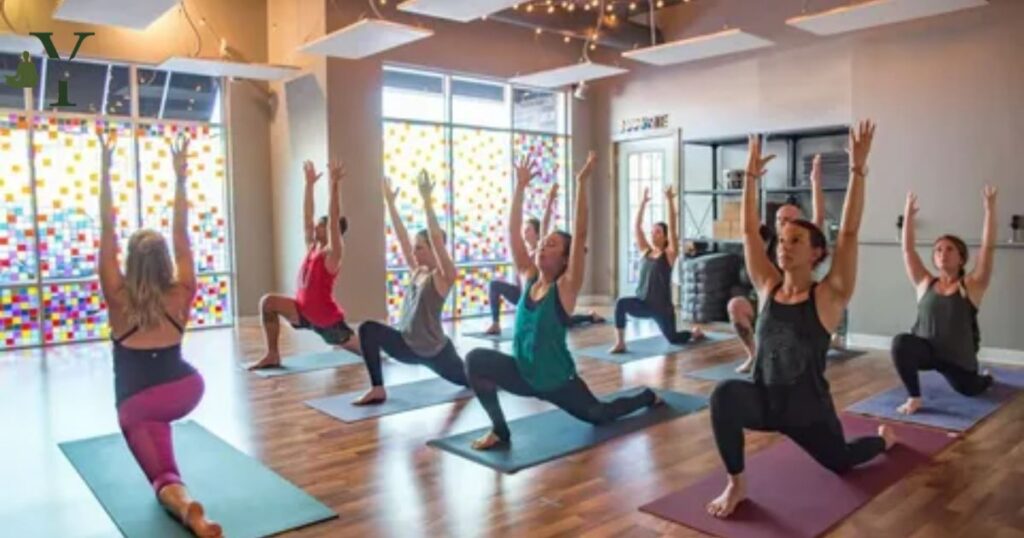
Dragonfly Yoga Studio, located in the heart of [City/Town], is a serene retreat dedicated to the art of yoga and holistic well-being. As you enter the studio, the calming ambiance welcomes you, creating a tranquil space where practitioners of all levels can explore the transformative power of yoga.
The studio’s experienced instructors offer a range of classes, from Hatha to Vinyasa, ensuring that each session caters to diverse needs. The inclusive and supportive community at Dragonfly Yoga Studio encourages individuals to embark on their wellness journey, fostering personal growth and connection in a nurturing environment.
Yoga Hand Symbols 101: Your Comprehensive Introduction to Mudras
Yoga, a holistic practice that encompasses physical postures, breath control, and meditation, goes beyond the boundaries of the mat. One fascinating aspect of yoga is the use of hand gestures known as mudras.
These symbolic hand positions have been an integral part of yoga and meditation for centuries, offering practitioners a profound means of connecting mind, body, and spirit. In this exploration of Yoga Hand Symbols 101, we delve into the world of mudras, unlocking their meanings, benefits, and how to incorporate them into your practice.
Understanding Mudras
Mudras, derived from the Sanskrit word for “seal” or “gesture,” are symbolic hand positions that facilitate the flow of energy in the body. These gestures are believed to create a link between the individual and the universal cosmic energy. In yoga philosophy, it is thought that specific mudras can influence different aspects of the self, including emotions, mental clarity, and spiritual well being.
Types of Mudras
- Jnana Mudra (Wisdom Gesture): Formed by touching the tip of the thumb to the index finger, this mudra represents knowledge, wisdom, and the unity of individual consciousness with the universal.
- Chin Mudra (Consciousness Gesture): Created by joining the thumb and index finger and keeping the other three fingers extended, this mudra is associated with the connection between individual consciousness and cosmic consciousness.
- Anjali Mudra (Salutation Gesture): Also known as the prayer position, this mudra involves bringing the palms together in front of the heart, symbolizing respect, honor, and unity.
- Hridaya Mudra (Heart Gesture): By joining the tips of the thumbs and middle fingers while keeping the other fingers extended, this mudra is believed to promote a connection with the heart and enhance emotional balance.
- Gyan Mudra (Knowledge Gesture): Formed by touching the tip of the thumb to the tip of the index finger, this mudra is thought to stimulate the air element and enhance concentration and memory.
Benefits of Mudras
- Psychological Balance: Mudras are believed to influence the flow of prana (life force energy), contributing to emotional and mental equilibrium.
- Spiritual Connection: Practicing mudras is thought to deepen one’s spiritual connection by harmonizing the body and mind with the universal energy.
- Enhanced Meditation: Incorporating mudras into meditation can intensify concentration, allowing practitioners to reach deeper states of awareness and mindfulness.
Unraveling the Science Behind Yoga Hand Symbols
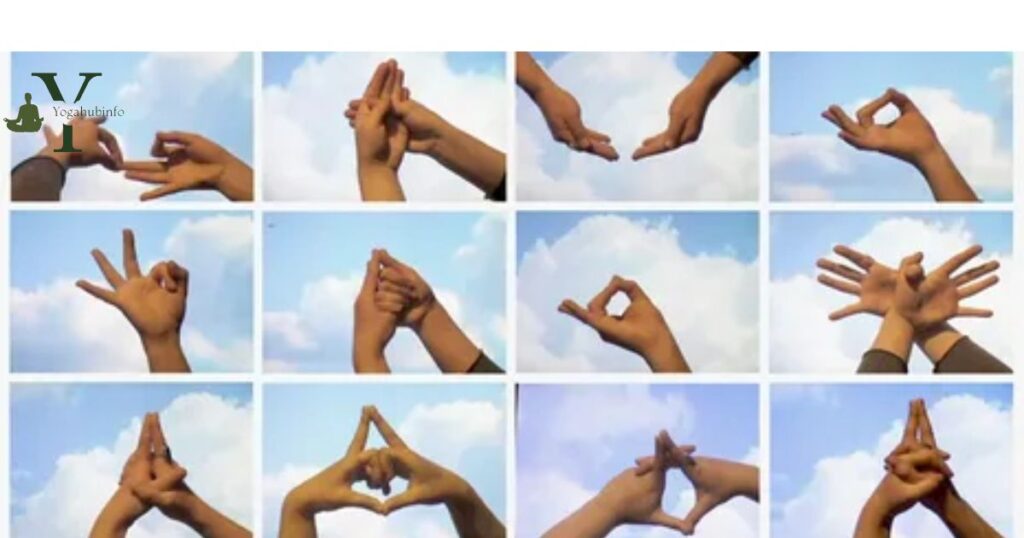
Yoga hand symbols hold deep meanings. Each gesture, or mudra, carries a unique significance. These hand movements are not just gestures but pathways to connect mind and body.
The science behind yoga hand symbols lies in their impact on energy flow. Mudras stimulate specific energy channels, promoting balance and well-being. Understanding these symbols enhances the practice, allowing individuals to tap into the holistic benefits of yoga.
Exploring the science behind yoga hand symbols unveils a rich tradition. From calming anxiety to boosting concentration, each mudra serves a purpose. Integrating these symbolic gestures into yoga practice adds a profound layer of mindfulness and spiritual awareness.
An Introduction to Specific Mudras
Mudras, originating from ancient Indian traditions, are symbolic hand gestures or positions that are widely used in meditation yoga, and various spiritual practices. These gestures are believed to have profound effects on the mind, body, and spirit, and are an integral part of many Eastern philosophies. In this exploration, we delve into specific mudras, each carrying unique meanings and benefits.
- Chin Mudra (Consciousness Seal)
- Gesture: The index finger touches the thumb, forming a circle, while the other three fingers are extended.
- Meaning: This mudra symbolizes the connection between individual consciousness and universal consciousness. It is often used during meditation to enhance focus and awareness.
- Anjali Mudra (Salutation Seal)
- Gesture: Palms pressed together at the heart center, fingers pointing upward.
- Meaning: Anjali Mudra signifies respect, honor, and devotion. It is commonly used as a gesture of greeting, prayer, or in the opening and closing of a yoga session, fostering a sense of unity and reverence.
- Gyan Mudra (Knowledge Seal)
- Gesture: The index finger touches the tip of the thumb, forming a circle, while the other three fingers are extended.
- Meaning: Associated with wisdom and knowledge, Gyan Mudra is believed to stimulate concentration, sharpen memory, and promote a meditative state. It is frequently employed during meditation and pranayama practices.
- Apana Mudra (Energy Seal)
- Gesture: The tips of the thumb, middle, and ring fingers touch, while the index and little fingers are extended.
- Meaning: Apana Mudra is thought to balance the body’s energy and aid in detoxification. It is believed to support the elimination of waste and negative energies, promoting a sense of renewal and vitality.
- Vayu Mudra (Air Seal)
- Gesture: The index finger bends to touch the base of the thumb, while the thumb gently presses against the index finger’s knuckle.
- Meaning: This mudra is associated with the air element and is believed to alleviate various air-related imbalances, such as bloating and joint pain. It is thought to enhance the flow of prana (life force) in the body.
- Dhyana Mudra (Meditation Seal)
- Gesture: Hands rest on the lap, right hand on top of the left, with thumbs lightly touching, forming a triangle.
- Meaning: Dhyana Mudra is a classic meditation posture, promoting concentration and inner peace. It symbolizes the unity of wisdom and compassion, fostering a deep connection with the self and facilitating a tranquil meditative state.
What is Abhaya Mudra: The Mudra for Fearlessness
Abhaya Mudra, or the Mudra of Fearlessness, is a symbolic hand gesture prevalent in Hinduism and Buddhism. Formed by raising the right hand with the palm outward, it signifies protection and dispelling fear. Often depicted in religious iconography, this mudra is notably associated with enlightened beings such as Lord Buddha and deities like Shiva and Vishnu.
The open palm facing outward symbolizes non-aggression and fosters a universal message of inner courage and peace. Beyond religious contexts, the Abhaya Mudra encourages individuals to confront challenges with resilience and navigate life’s uncertainties fearlessly. Incorporating this mudra into meditation practices aims to deepen one’s connection with the divine, fostering a sense of fearlessness and assurance.
Journal Your Journey with Inner Hero Yoga Journal

The Inner Hero Yoga Journal is an empowering companion designed to elevate your yoga journey. With thoughtfully crafted prompts and spaces for daily reflections, it goes beyond tracking physical poses, inviting you to explore the mental and spiritual dimensions of your practice. This journal becomes a sacred space for self-discovery, encouraging you to connect with your inner hero – the resilient and authentic self within.
Structured to inspire both seasoned practitioners and beginners, the Inner Hero Yoga Journal provides sections for goal-setting and intention-setting. It serves as a roadmap for personal growth, aligning your daily actions with deeper aspirations.
Educational components on yoga philosophy, anatomy, and breathing exercises enrich your understanding, making this journal a holistic tool for cultivating mindfulness, positive change, and a more meaningful yoga experience. Whether you seek to master challenging poses or deepen your connection with yourself, the Inner Hero Yoga Journal becomes a valuable ally in your transformative journey.
Enhancing Your Yoga Practice with Yoga Hand Symbols
Yoga is a holistic practice that encompasses physical postures, breath control, meditation, and ethical principles. While the physical aspect of yoga is often emphasized, incorporating symbolic gestures, known as mudras, can enhance your practice by promoting a deeper connection between mind, body, and spirit. Among these mudras, yoga hand symbols play a significant role in channeling energy, fostering concentration, and unlocking spiritual potential.
Understanding Yoga Hand Symbols
- Anjali Mudra (Prayer Position)
- Commonly used at the beginning and end of a yoga practice.
- Involves bringing the palms together at the heart center.
- Represents unity, reverence, and the balance of opposites.
- Gyan Mudra (Knowledge Seal)
- Formed by touching the tip of the index finger to the tip of the thumb.
- Encourages concentration, sharpens memory, and promotes spiritual openness.
- Activates the air element and enhances communication.
- Chin Mudra (Consciousness Seal)
- Formed by joining the thumb and index finger while keeping the other three fingers extended.
- Symbolizes the connection of individual consciousness with universal consciousness.
- Facilitates meditation and inner reflection.
- Dhyana Mudra (Meditation Seal)
- Created by placing the right hand over the left, with both thumbs lightly touching.
- Encourages concentration and tranquility during meditation.
- Represents the balance between active and passive energy.
- Prithvi Mudra (Earth Seal)
- Involves touching the tip of the ring finger to the tip of the thumb, forming a circle.
- Connects the practitioner to the grounding energy of the earth.
- Enhances stability, strength, and a sense of security.
Incorporating Yoga Hand Symbols into Your Practice
- Begin and End Your Practice
- Start and conclude your yoga session with Anjali Mudra to set a positive and focused intention.
- Enhance Breath Awareness
- Combine Gyan Mudra with pranayama (breath control) exercises to deepen your breath and heighten awareness.
- Deepen Meditation
- Employ Chin Mudra and Dhyana Mudra during meditation to foster a deeper connection with your inner self.
How to Integrate Yoga Hand Symbols into Your Yoga Practice?
Yoga hand symbols add depth to your practice. Begin by learning basic mudras. These are hand gestures with specific meanings. Incorporate them into your poses for a mindful experience.
Start with the “Anjali Mudra” or prayer position. Bring palms together at your heart center. This symbolizes gratitude and unity. Hold it during meditation or between poses to enhance your spiritual connection.
Experiment with other mudras like “Gyan Mudra” for wisdom. Connect your thumb and index finger, resting your hands on your knees. Explore how each symbol aligns with different aspects of your practice. Embrace the harmony they bring to your yoga journey.
Embrace the Journey: Mudras and Your Yoga Practice
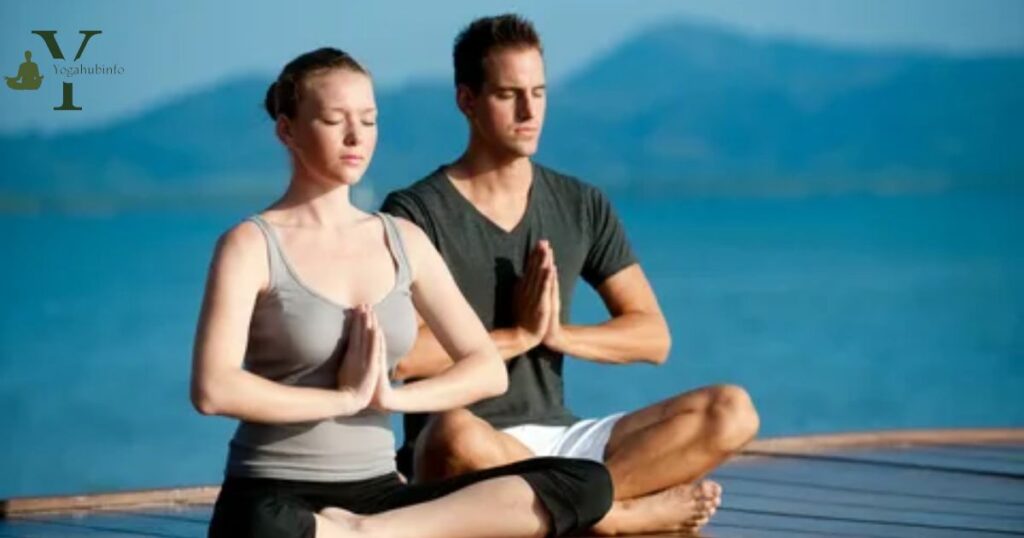
Embracing the journey of yoga involves more than just physical postures. Mudras, or hand gestures, play a vital role in enhancing your practice. These symbolic gestures help channel energy, deepen concentration, and connect with your inner self.
As you explore mudras in your yoga practice, each hand position carries its own significance. From the calming Chin Mudra to the energizing Prana Mudra, these gestures offer a holistic approach to well-being. Incorporating mudras can bring mindfulness to your movements, fostering a sense of balance and tranquility.
Don’t overlook the transformative power of mudras. They serve as a silent language between mind and body, enriching the spiritual aspect of your practice. So, as you flow through your poses, remember to embrace the journey fully, letting mudras guide you to a deeper, more mindful yoga experience.
A Yoga Sequence with Mudras
Yoga is a wonderful practice that combines movement, breath, and mindfulness. A unique aspect of yoga is the use of mudras, hand gestures that enhance the flow of energy. In a yoga sequence with mudras, these graceful hand movements add a new dimension to the practice.
Mudras, often overlooked, play a crucial role in balancing the body’s energy. As you move through the yoga sequence, each mudra corresponds to different aspects of well-being. Simple yet powerful, these hand gestures deepen the connection between mind and body, promoting a sense of inner harmony.
You’re a beginner or an experienced yogi, incorporating mudras into your practice can elevate the experience. The yoga sequence with mudras becomes a journey of self-discovery, fostering a serene environment for both body and mind. So, next time you roll out your yoga mat, try infusing your routine with the subtle magic of mudras.
Frequently Asked Questions
What do the different hand symbols in yoga represent?
- In yoga, hand symbols, known as mudras, convey specific meanings and energies, enhancing the mind-body connection during practice.
Are there specific hand symbols for meditation in yoga?
- Yes, mudras like Chin Mudra and Gyana Mudra are commonly used during meditation to channel energy and promote focus.
How can yoga hand symbols influence the flow of energy in the body?
- Yoga hand symbols act as energy circuits, directing prana or life force through specific pathways, aiding in balancing and harmonizing the body’s energy.
Are there mudras that can alleviate stress and promote relaxation?
- Yes, mudras like Shuni Mudra and Prana Mudra are believed to reduce stress and induce a sense of calmness when practiced regularly.
Can anyone practice yoga hand symbols, regardless of experience level?
- Yoga hand symbols are accessible to practitioners of all levels and can be integrated into various yoga routines for enhanced spiritual and physical benefits.
Do different yoga traditions have distinct hand symbols or mudras?
- Yes, various yoga traditions incorporate unique mudras, reflecting cultural and philosophical nuances, adding diversity to the practice.
Conclusion
The exploration of Yoga Hand Symbols reveals a rich and ancient tradition deeply intertwined with the practice of yoga. These symbols serve as powerful tools for practitioners, guiding them towards a heightened spiritual and meditative experience. By incorporating these hand gestures, individuals can deepen their connection with the mind, body, and soul, fostering a holistic approach to well-being.
The significance of Yoga Hand Symbols extends beyond the physical realm, delving into the realm of energy and consciousness. These symbols act as conduits for channeling and directing energy flow within the body, enhancing the overall effectiveness of yoga practice. As practitioners engage with these symbols, they unlock a profound understanding of their own inner energies, fostering a sense of balance and harmony.
The study of Yoga Hand Symbols underscores the universal language that transcends cultural and geographical boundaries. These symbols serve as bridges between the individual and the cosmic forces at play, offering a means to connect with the divine. As yoga continues to evolve and gain global popularity, the incorporation of these symbols adds a layer of depth and spiritual significance, enriching the practice for those seeking a more profound and transformative journey.
Explore the profound meanings behind yoga hand symbols. Unlock spiritual insights and deepen your practice with these ancient gestures.

Marcus Evergreen, with 8 years of yoga expertise, is the author behind yogahubinfo.com, sharing insights and wisdom in holistic well-being.
